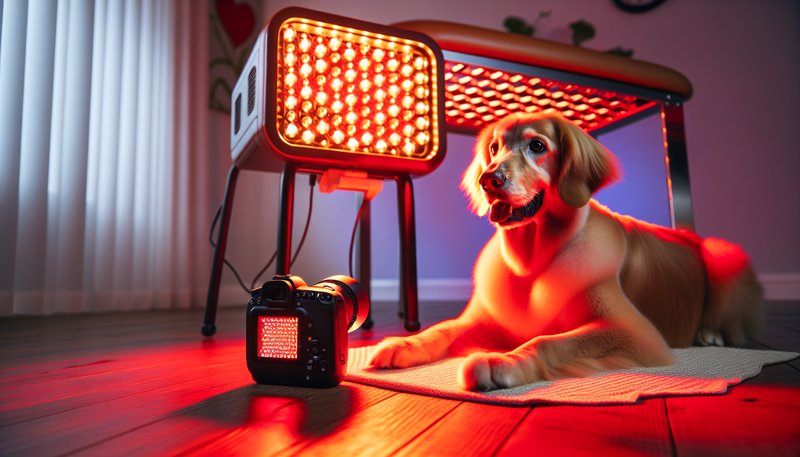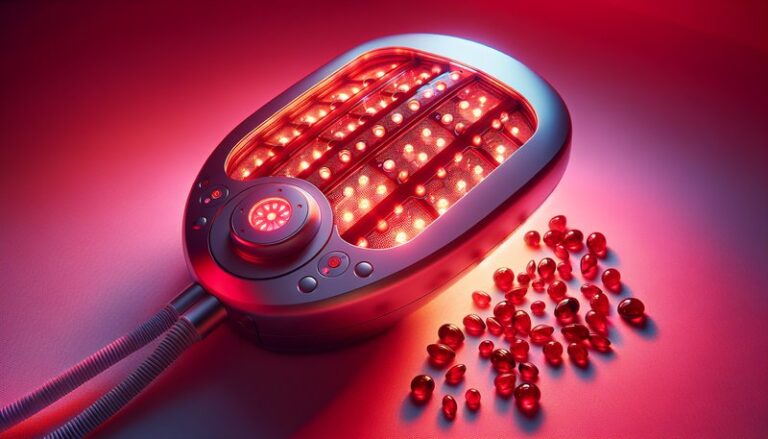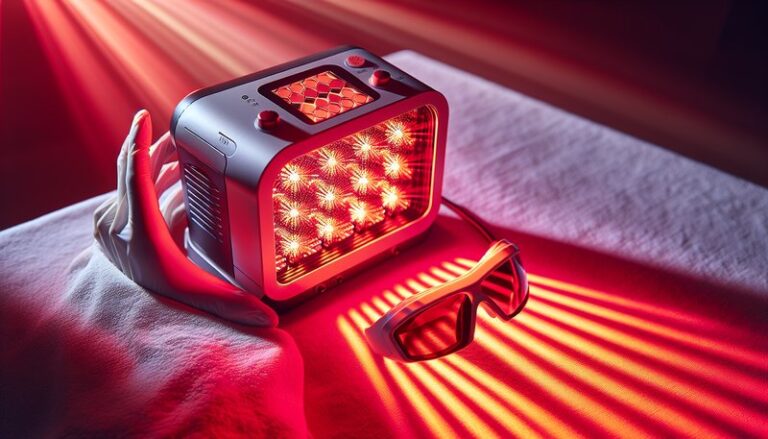Is Red Light Therapy Safe For Dogs?
Are you curious about the benefits of red light therapy for your furry friend? With the growing popularity of this treatment in both human and veterinary medicine, many dog owners are asking whether it is safe and effective for their pets.
See our extensive coverage Does Red Light Therapy Aid Weight Loss?
This article will explore what red light therapy is, its benefits for dogs, considerations to keep in mind before using it, alternatives, and answer some frequently asked questions. By the end, you should have a comprehensive understanding of the suitability of red light therapy for your canine companion.
Key Takeaways
- Red light therapy is a non-invasive treatment that stimulates healing and reduces inflammation in dogs.
- Benefits include pain relief, improved healing times, and enhanced mobility for dogs with joint issues.
- While generally safe, it’s crucial to consult a veterinarian before starting any new therapy for your dog.
What is Red Light Therapy?
Red light therapy, also known as low-level laser therapy (LLLT), involves the application of specific wavelengths of light to the surface of the skin. It is known to stimulate cellular processes, promoting healing and reducing inflammation. This therapy has been extensively studied and is widely used in physical therapy for various purposes, including pain relief and tissue repair.
The mechanism behind red light therapy is based on a concept called photobiomodulation. This process activates light-sensitive receptors in the cells, which can lead to increased ATP (adenosine triphosphate) production. ATP is the energy currency of cells, and its increased availability can expedite the healing process.
What are the Benefits of Red Light Therapy for Dogs?
The following points explore the advantages that red light therapy can provide for dogs suffering from various ailments.
Pain Relief
One of the primary benefits of red light therapy is its ability to alleviate pain. Many dogs experience chronic pain due to arthritis, injuries, or surgeries. Red light therapy can penetrate deep into the tissues, reducing inflammation and promoting blood circulation, which helps to reduce discomfort.
Enhanced Healing
Red light therapy has been shown to enhance the healing process of wounds, surgical sites, and soft tissue injuries. This can be particularly valuable for dogs recovering from surgery or those with chronic wounds, enabling quicker recovery times and healthier tissue growth.
Improved Mobility
For older dogs or those suffering from joint illnesses, red light therapy can significantly improve mobility. By alleviating pain and inflammation and promoting healing, dogs may regain easier movement and overall better quality of life.
Non-Invasive Treatment
Red light therapy is a non-invasive treatment option, meaning it can be administered without the need for anesthesia or surgical procedures. This makes it a safer alternative for many pets, especially those that are elderly or have comorbidities.
For more insights, see Frequency of Red Light Therapy for Face
Is it Possible to Use Red Light Therapy at Home?
Yes, using red light therapy for dogs at home is possible with portable devices designed for pets. However, it is essential to ensure that the device is specifically made for animal use and adheres to safety standards.
What are the Advantages of At-Home Red Light Therapy?
At-home devices offer convenience for dog owners, allowing them to administer therapy at their own schedule. Additionally, it can be more economical than visiting a clinic frequently.
What are the Disadvantages of At-Home Red Light Therapy?
On the downside, improper use of the device can lead to ineffective treatment or even harm. Without professional guidance, it’s easy to miscalculate the duration, frequency, or intensity of the therapy.
What are the Things to Consider Before Using Red Light Therapy?
Before starting red light therapy for your dog, there are crucial factors to consider.
Consult with a Veterinarian
Always consult a veterinarian before beginning therapy. They can assess your dog’s specific health needs and recommend the most appropriate treatment plan, including if red light therapy is appropriate for their condition.
Choose the Right Device
If you decide to use red light therapy at home, it is vital to select a high-quality device designed for canine use. Look for products that are clinically validated and have good reviews from fellow pet owners.
Monitor Response to Treatment
As with any therapy, monitoring your dog’s response after starting treatment is crucial. Look for positive changes, such as increased mobility and decreased discomfort, as well as any adverse reactions.
What are the Alternatives to Red Light Therapy?
If red light therapy does not seem suitable for your dog, consider these alternatives.
Physical Therapy
Physical therapy for dogs includes a variety of modalities like exercises, hydrotherapy, and manual therapy. It can help improve mobility and strength without invasive procedures.
Acupuncture
Canine acupuncture involves inserting needles into specific points on the body to relieve pain and promote healing. Many dogs respond well to acupuncture as a holistic alternative.
Medication
In some cases, prescription medication may be necessary to manage pain and inflammation. Consult your veterinarian for the best options available to treat your dog’s condition.
Conclusion: Is it Recommended to Use Red Light Therapy for Dogs?
Red light therapy can be a safe and effective treatment option for dogs, particularly for managing pain, enhancing healing, and improving mobility. However, it is crucial to consult your veterinarian before initiating this therapy to ensure it aligns with your dog’s health needs. With proper guidance and monitoring, red light therapy can be a beneficial addition to your dog’s health regimen.
Frequently Asked Questions
Is red light therapy painful for dogs?
No, red light therapy is generally not painful. Most dogs find the treatment soothing and relaxing, often lying still during the session.
How long does a red light therapy session last?
Typical sessions can last from 10 to 30 minutes, depending on the dog’s condition and the severity of the issue being treated.
How often should red light therapy be administered?
The frequency of treatment can vary based on your dog’s specific conditions, but many veterinary recommendations suggest sessions 1-3 times per week initially, tapering off based on improvement.
Can all dogs benefit from red light therapy?
While many dogs can benefit from red light therapy, not all conditions may respond positively. Always consult your veterinarian for personalized recommendations regarding your dog’s health.





